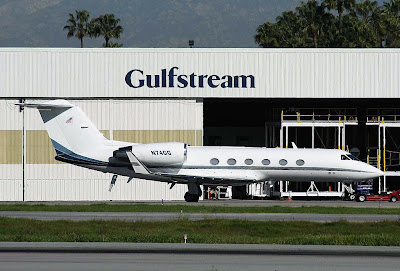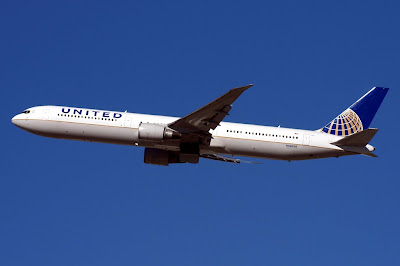Airplanes leaving John Wayne Airport will soon follow a new route designed to keep them farther from the Back Bay neighborhoods that have long complained about the shriek of jet engines overhead.
The new route better follows the contours of the Upper Newport Bay itself, threading flights between the homes that line its east and west shores. Dozens of flights each day will shift to the new track within the next month.
The Federal Aviation Administration has been tweaking the flight path out of John Wayne in recent years as better technology made it easier for airplanes to fly more-precise routes. It tightened one of the airport's main departure routes in 2009, but also shifted it a few hundred feet to the east.
 That put departing planes and all their noise closer to the homes of a community called The Bluffs. The new route is meant to correct that by shifting the flight path back toward the center of the bay, FAA spokesman Ian Gregor said Monday.
That put departing planes and all their noise closer to the homes of a community called The Bluffs. The new route is meant to correct that by shifting the flight path back toward the center of the bay, FAA spokesman Ian Gregor said Monday.
Three dozen Southwest Airlines flights tested the new route earlier this month. Plotted on a map of Newport Beach, their flight paths merge into a single ribbon heading out over the bay, midway between the east and west sides.
"Let's put it this way: A bit more tolerable," said Don Passaglia, a board member for The Bluffs Homeowners Community Association, who saw the test results. The old route, he said, put planes so close to his house as they took off that "it appears (they're) right over your head."
About 90 flights a day have been using the route that took them over The Bluffs and will switch to the new route within the month. They include commercial aircraft heading east of Las Vegas as well as some business jets.
The airport faced lawsuits from noise-weary residents after its modern terminal was built in 1967. A court settlement in 1985 limited the noisiest flights, capped passenger volume, and restricted the airport's size.
(Doug Irving - The Orange County Register)
The new route better follows the contours of the Upper Newport Bay itself, threading flights between the homes that line its east and west shores. Dozens of flights each day will shift to the new track within the next month.
The Federal Aviation Administration has been tweaking the flight path out of John Wayne in recent years as better technology made it easier for airplanes to fly more-precise routes. It tightened one of the airport's main departure routes in 2009, but also shifted it a few hundred feet to the east.
 That put departing planes and all their noise closer to the homes of a community called The Bluffs. The new route is meant to correct that by shifting the flight path back toward the center of the bay, FAA spokesman Ian Gregor said Monday.
That put departing planes and all their noise closer to the homes of a community called The Bluffs. The new route is meant to correct that by shifting the flight path back toward the center of the bay, FAA spokesman Ian Gregor said Monday.Three dozen Southwest Airlines flights tested the new route earlier this month. Plotted on a map of Newport Beach, their flight paths merge into a single ribbon heading out over the bay, midway between the east and west sides.
"Let's put it this way: A bit more tolerable," said Don Passaglia, a board member for The Bluffs Homeowners Community Association, who saw the test results. The old route, he said, put planes so close to his house as they took off that "it appears (they're) right over your head."
About 90 flights a day have been using the route that took them over The Bluffs and will switch to the new route within the month. They include commercial aircraft heading east of Las Vegas as well as some business jets.
The airport faced lawsuits from noise-weary residents after its modern terminal was built in 1967. A court settlement in 1985 limited the noisiest flights, capped passenger volume, and restricted the airport's size.
(Doug Irving - The Orange County Register)



































 The RAF and Boeing had planned to host a general media facility to welcome the aircraft at Brize Norton, but this was abandoned within less than 24h of the event to allow only local press to attend. The service's transport super-base falls within Cameron's parliamentary constituency of Witney, Oxfordshire.
The RAF and Boeing had planned to host a general media facility to welcome the aircraft at Brize Norton, but this was abandoned within less than 24h of the event to allow only local press to attend. The service's transport super-base falls within Cameron's parliamentary constituency of Witney, Oxfordshire.











